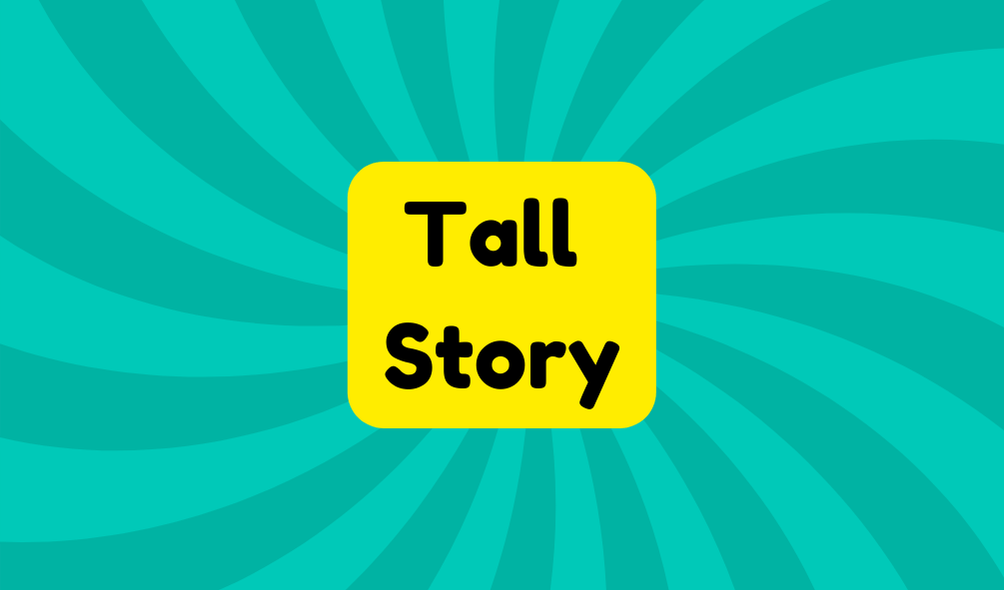A tall story is an embellished narrative that blurs the line between fact and fiction, often using exaggeration to engage listeners. Originating in 19th century England, it has roots in fantastical storytelling. These exaggerated tales can captivate but also mislead, emphasizing the need for discernment. Examples range from outrageous claims to amusing misadventures. While entertaining, tall stories remind us to question authenticity and seek truth amidst exaggeration. Further exploration reveals their cultural significance and relevance today.
Synonyms
Tall stories, often filled with embellishments and far-fetched details, have several synonyms that capture their essence. These terms evoke the emotional response tied to exaggerated claims and unbelievable narratives, highlighting the skepticism surrounding such accounts.
- Fabricated Tales
- Hyperbolic Accounts
- Fictional Anecdotes
These synonyms reflect a broader tendency to distort reality, persuading listeners through engaging, yet dubious, storytelling. In an age aiming for innovation, discerning the truth amid fanciful narratives becomes ever more vital. Understanding these synonyms not only fosters critical thinking but also encourages a more informed perspective on the stories we encounter daily.
Example of Sentences
Exaggerated narratives often serve as an enthralling form of storytelling, yet the reality behind them can be far less enchanting. Famous anecdotes often feature exaggerated claims that captivate audiences, but discerning truth from fiction remains essential. For instance, consider the following examples:
- A man claimed he could swim across the entire ocean, but reality found him struggling in a lake.
- Someone insisted they tamed a lion, yet they only visited a zoo.
- A storyteller boasted of catching a fish the size of a car, which turned out to be a modest trout.
These tales remind readers of the fascinating, yet often misleading, nature of tall stories.
Origin
The phrase "tall story" has its roots in 19th century England, where it emerged from a culture that valued verbal exaggeration and boastful tales. This linguistic evolution is often associated with the Baron von Münchhausen, celebrated for his fantastical narratives. In America, the concept transformed into tall tales filled with larger-than-life characters, serving both entertainment and cautionary purposes. These stories, while engaging, often blurred the lines between truth and fiction, challenging listeners to discern reality from embellishment. Ultimately, tall stories highlight society's fascination with exaggeration, emphasizing the human tendency to embellish experiences for impact.
Collocations
While many may delight in sharing amusing anecdotes, the phrase "tall story" often serves as a cautionary reminder of the blurry line between reality and fabrication. Collocations surrounding this term reveal a domain of fictional narratives and exaggerated tales, highlighting just how easily stories can morph. Furthermore, the language used can invoke strong reactions:
- Stunning fabrications that captivate.
- Outrageous claims that shock the mind.
- Laughable mishaps that entertain.
Such collocations not only embellish tales but also push the boundaries of truth, raising skepticism regarding the authenticity of what is presented, urging listeners to discern between creative storytelling and genuine experiences.
How to Use in Everyday Language
Narratives crafted around the concept of a "tall story" can often blur the lines between fact and fiction, prompting individuals to reflect on their language choices carefully. To incorporate imaginative flair into daily conversations, one can utilize creative storytelling and exaggeration techniques. This approach not only enhances engagement but also fosters a playful atmosphere. However, it's essential to differentiate between whimsical embellishments and misrepresentation. When sharing experiences, moderation in stretching the truth guarantees clarity while still fascinating the audience. Ultimately, finding the balance between reality and exaggeration can enrich dialogue without straying too far from authenticity.
Why Is It Still Relevant Today?
How do tales of exaggeration continue to captivate audiences in a world increasingly driven by facts? Cultural storytelling remains significant, as it provides an escape from the monotony of everyday life. Modern exaggeration allows individuals to express creativity and explore fantastical ideas. In a society saturated with cold facts, these narratives spark imagination and foster connection, inviting listeners to question reality and share experiences. While skepticism about embellishment is valid, the enduring appeal of tall stories lies in their ability to transcend barriers, encouraging discourse and reflection. Ultimately, they remind us of our shared need for wonder amidst the mundane.







